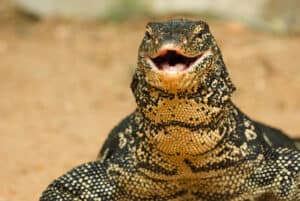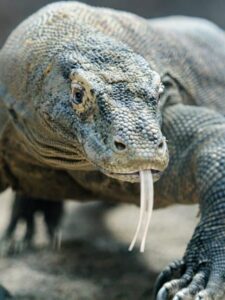Texas is a large state with unique animals and plants. The lone star state has a surface area of 268,596 square miles and is home to over 30 million people. The environment and geography in Texas vary a lot. For example, Texas has tall mountains, desert land, swamps, beaches, prairies, and lakes.
Texas has thousands of animal species, including about 142 mammal species, 160 reptile species, and over 600 species of birds. But, do you know the official Texas state reptile? Follow along to learn more about the official Texas state reptile.

The official Texas state reptile is the Texas horned lizard. Another name for this reptile is the horny toad. It was adopted as the official Texas state reptile on June 18, 1993, when Governor Ann Richards signed House Concurrent Resolution No. 141. Sadly, this animal has been on the threatened species in Texas list since 1967.
About the Texas Horned Lizard
Texas horned lizards are unique. They are lizards with many bumps along their bodies. These fierce-looking reptiles are members of the family Phrynosomatidae. The scientific name for Texas horned lizards is Phrynosoma cornutum. They are sometimes confused for the Texas spiny lizard (Sceloporus olivaceus) since they live in the same environment.
Size and Description
Texas horned lizards have flat heads that resemble a frog or toad’s face. They also have rounded and spiky bodies. Females are larger than males and have a snout-vent length of around 5 inches, while for males it’s 3.7 inches. These lizards also have two distinctly long horns crowning their heads. Texas horned lizards rely on blending into the environment for survival, and they vary in color. The Texas horned lizards that live in deserts are yellow or reddish-brown, while those living in prairies are tannish brown.
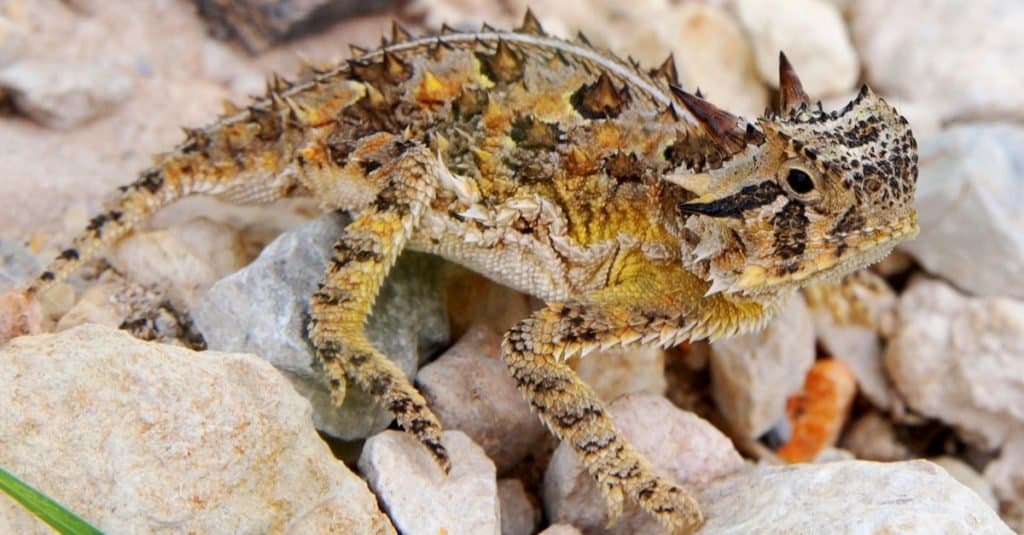
Texas horned lizards vary in color, some are yellow, while others are tannish brown.
©Matt Jeppson/Shutterstock.com
Diet
Like most lizards, Texas horned lizards mainly consume insects, however, the majority of their diet is made up of harvester ants. They also eat termites, beetles, and grasshoppers. Texas horned lizards swallow their prey whole. They are also ambush predators and use their tongues to snatch up their predators. Although harvester ants are venomous, Texas horned lizards have a blood plasma factor that neutralizes the venom. The harvester ant population though is declining because of pesticides and non-native aggressive red imported fire ants. They can destroy harvester ant colonies, which leads to a decline in Texas horned lizards.
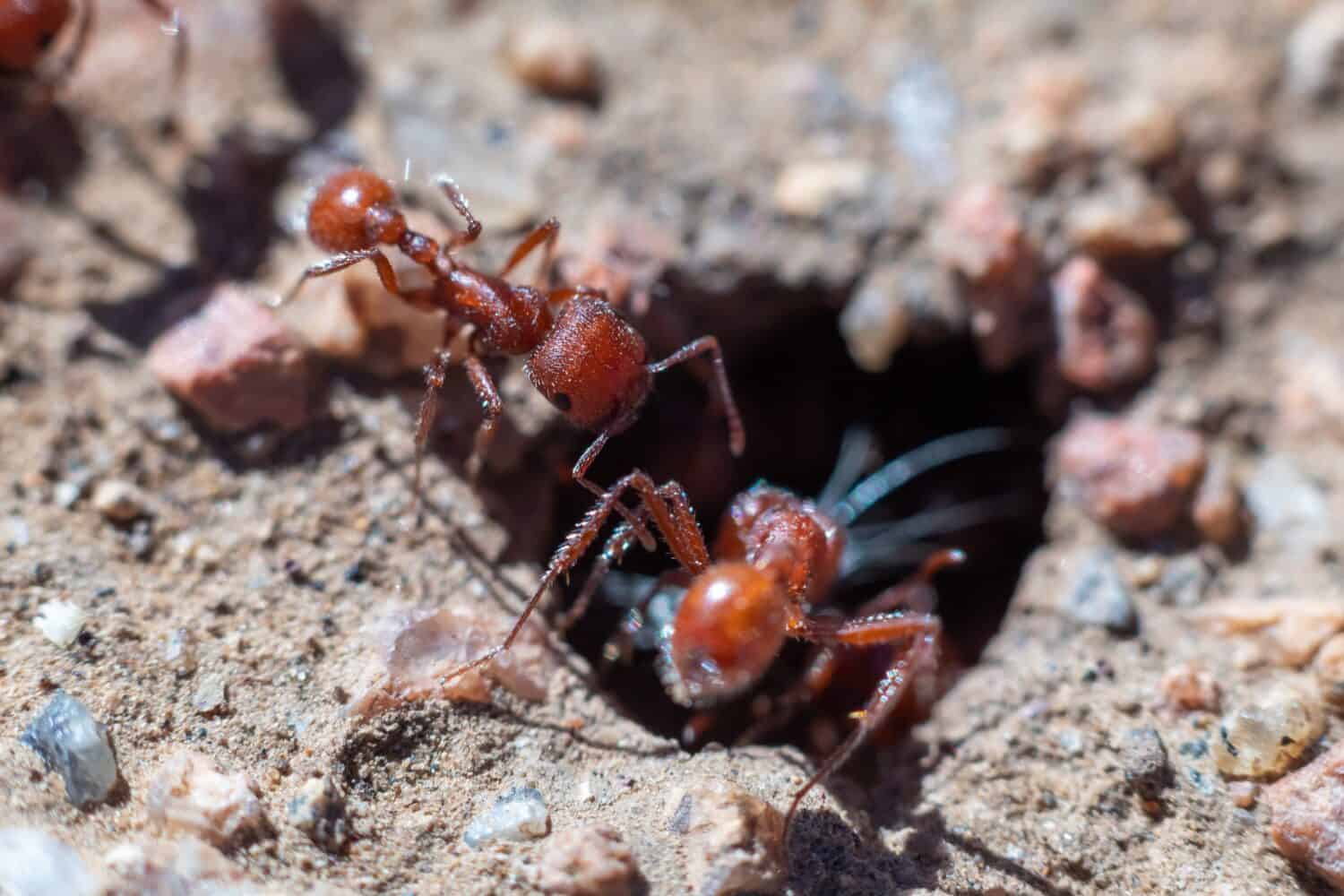
Red harvester ants make up most of the Texas horned lizard’s diet.
©Kessler Bowman/Shutterstock.com
Predators
Texas horned lizards have many predators. Some of the most common predators are hawks, roadrunners, coyotes, ground squirrels, snakes, and pets like cats and dogs. Although they have many predators, these lizards squirt a stream of blood from the corner of their eyes. The blood can splatter about 5 feet away, but this isn’t very accurate. Still, it renders their prey confused and blinded if it hits their eyes.
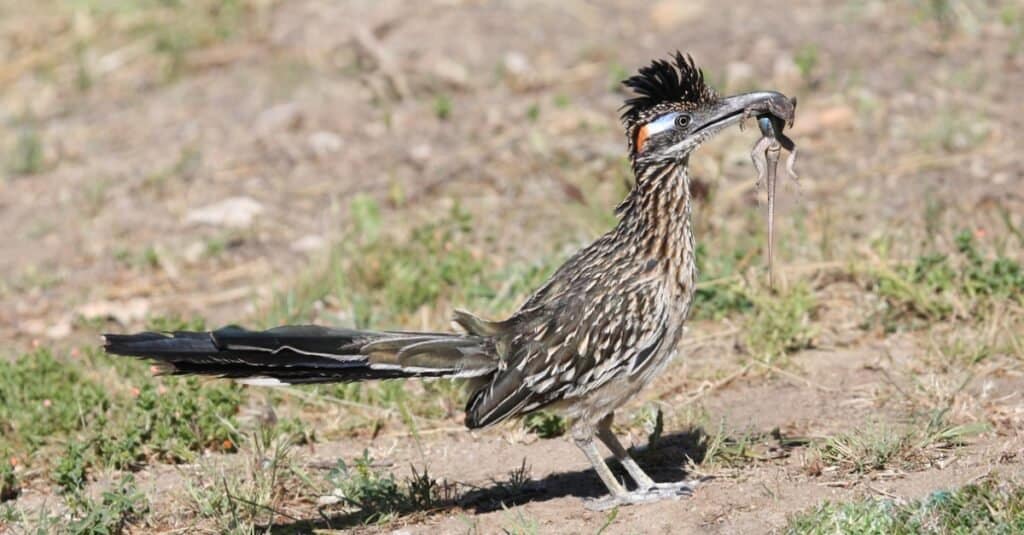
Roadrunners prey on Texas horned lizards.
©iStock.com/NaturesDisplay
Behaviors
While Texas horned lizards look fierce, they are docile and calm animals. They rarely react to humans and don’t bite. Instead, they puff out their chest in defense. These animals are also sunbathers and need direct sunlight to produce enough vitamin C. Without enough sunlight, they can suffer from vitamin deficiency. To get enough sun, these lizards lounge around and lay on rocks and along the sides of roads. When afraid, Texas horned lizards run quickly but move very little. They also bury themselves underground when escaping from a predator. Texas horned lizards also bury themselves under the sand at night.
One of the most unique parts of the Texas horned lizard is its ability to squirt blood from its eyes. It does this by restricting the blood flow which increases blood pressure and ruptures tiny vessels around the eyelids. The blood mixes with a chemical that tastes awful to some predators like coyotes and wolves. The blood-shooting defense mechanism though doesn’t work against predatory birds.
Distribution
The Texas horned lizard is endemic to North America and is found in south-central regions of the US and northeastern Mexico. Texas is not the only state where Texas horned lizards live. They are also native to southeast Colorado, and parts of Kansas, New Mexico, Oklahoma, and Arizona. In Mexico, you can find this lizard in the following states: Nuevo Leon, Sonora, Chihuahua, Durango, Zacatecas, Tamaulipas, and San Luis Potosí. Because of the pet trade, some stable populations live in Florida, Georgia, and South Carolina.
The photo featured at the top of this post is © iStock.com/Shoemcfly
Thank you for reading! Have some feedback for us? Contact the AZ Animals editorial team.



